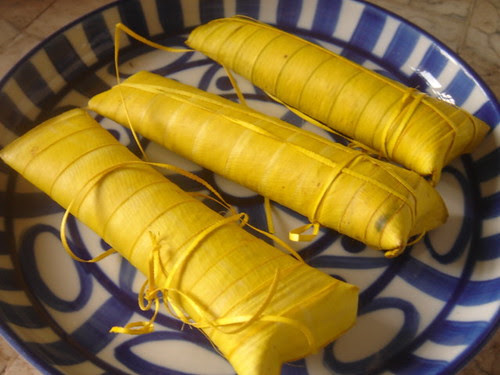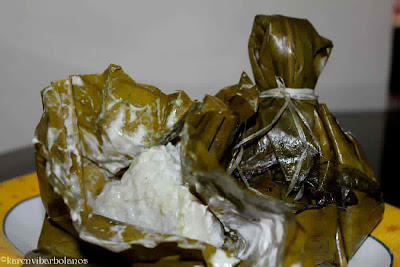In every town fiesta, one dish that we will never omitted on the table is the lechon kawali. People love to eat this because it is crispy and juicy at the time and it can be paired with a sarsa.
(Source: http://www.kawalingpinoy.com/wp-content/uploads/2014/10/lechonkawali1a.jpg)
This dish was founded during the Spanish colonial period. The term lechon came from the word, "leche" which means milk. You might be wondering how milk is related to the lechon kawali... Traditionally, when making this dish they roast suckling pigs which are very young pigs still breastfeeding from mother pigs. Nowadays, they also use a full mature pig so it can feed more people as this is usually served during special occasions such as wedding and fiestas.
Although that many of us this dish, it is considered as unhealthy because if you eat too much lechon kawali, you might suffer high blood pressure. It's advisable to eat moderately so that your health won't be at risk.
Here is the recipe;
Ingredients
- 1 kg pork belly, (1 big piece, do not slice)
- 1 whole garlic, crushed
- 1 tbsp peppercorns
- 4 pcs bay leaves
- ¼ cup soy sauce
- 1 can lemonade soda (7-Up or Sprite)
- sea salt
- water
- oil for deep frying
- sarsa (use Mang Tomas)
Instructions
- Rub sea salt generously on pork belly then cover it tightly with a cling wrap and store in the refrigerator for at least a day.
- Rinse pork in running water making sure all salt has been cleared from the meat.
- Place pork in a pressure cooker together with the soy sauce, garlic, peppercorns, laurel leaves and lemonade soda. Now pour enough water just to cover the entire meat.
- Pressure cook for 20 to 30 minutes (Depending on the thickness of pork belly), your timing should start when the whistle starts to make sound.
- Once the pork is tender remove it from the pressure cooker and pat it dry with a paper towel.
- Now once the surface of the pork is dried place it in a covered container and refrigerate it for at least 12 hours or until it is cold.
- Prepare a wok filled with oil and heat it up, once hot place the pork carefully while cold into the hot oil, skin side down, be really careful as it will splatter.
- Deep fry the pork until golden brown, this won’t take really long and remember you just want to make the outside crisp; the inner part is already cooked.
- Once cooked, slice into thin pieces and serve with the lechon sauce. (Recipe source: http://www.angsarap.net/2013/11/07/lechon-kawali-2/)


